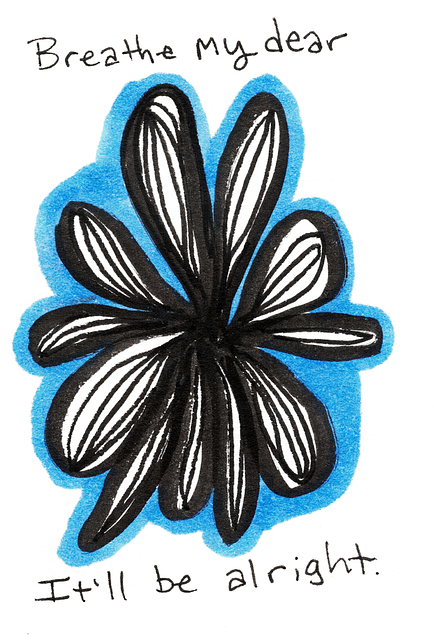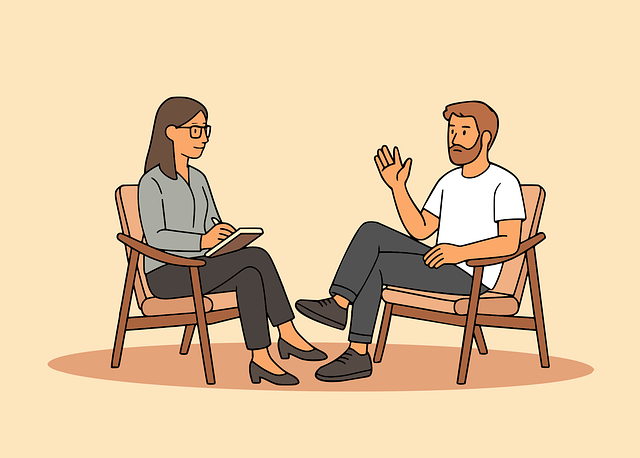CBT therapy is a powerful and effective treatment for Obsessive-Compulsive Disorder (OCD), addressing root causes by challenging and changing negative thought patterns and behaviors. It involves techniques like exposure and response prevention (ERP) to reduce anxiety, modify unhelpful habits, and improve overall well-being, ultimately empowering individuals to reclaim control over their lives. Choosing the right CBT therapist with OCD expertise is crucial for successful recovery.
“Obsessive-Compulsive Disorder (OCD) affects millions, characterized by intrusive thoughts and repetitive behaviors. Fortunately, Cognitive Behavioral Therapy (CBT) offers a highly effective approach to managing OCD. This article delves into the science behind CBT, its specific techniques like Exposure and Response Prevention (ERP), and how it challenges unhealthy thought patterns. Discover the long-term benefits, find the right therapist, and be inspired by real-life success stories showcasing the transformative power of CBT therapy for OCD.”
Understanding Obsessive-Compulsive Disorder (OCD)

Obsessive-Compulsive Disorder (OCD) is a mental health condition characterized by intrusive thoughts and repetitive behaviors that can significantly impact daily life. Individuals with OCD often experience distressing obsessions, which are persistent, unwanted thoughts or images that trigger anxiety. To alleviate this anxiety, they engage in compulsions—repetitive actions or mental acts they feel driven to perform. Common obsessions include concerns about contamination, symmetry, or doubt, while compulsions may involve excessive cleaning, checking, or counting rituals. CBT therapy plays a pivotal role in managing OCD by helping individuals challenge and modify these unhelpful thought patterns and behaviors.
Through CBT, patients learn to recognize the connection between their obsessions and compulsions, gaining insights into how these thoughts and actions interact and reinforce each other. Therapists guide clients in developing effective coping strategies, such as exposure and response prevention (ERP), where individuals gradually confront their fears without performing compulsive rituals. This process empowers them to manage anxiety differently, reducing the urge to engage in repetitive behaviors and fostering a greater sense of control over their lives.
What is Cognitive Behavioral Therapy (CBT)?

Cognitive Behavioral Therapy (CBT) is a form of talk therapy that focuses on identifying and changing negative thought patterns and behaviors. It’s a structured and goal-oriented approach designed to help individuals manage various mental health conditions, including obsessive-compulsive disorder (OCD). CBT for OCD works by helping patients understand the relationship between their thoughts, feelings, and actions, and then modifying these to reduce obsessions and compulsions.
The therapy involves collaborative work between a therapist and client, where they together explore unhelpful thinking habits and develop strategies to challenge and replace them with more balanced perspectives. Through various techniques, CBT enables individuals to gain control over their lives, reducing the impact of OCD symptoms and improving overall well-being.
The Link Between CBT and OCD Treatment

Cognitive Behavioral Therapy (CBT) is a highly effective treatment approach for obsessive-compulsive disorder (OCD). The link between CBT and OCD treatment lies in its ability to help individuals challenge and change unhelpful thought patterns and behaviors that contribute to the development and maintenance of OCD symptoms. CBT focuses on identifying and modifying distorted thinking, known as cognitive distortions, which can trigger intense anxiety and lead to repetitive compulsions.
Through structured sessions, CBT equips patients with valuable coping strategies to manage their OCD. It encourages individuals to confront their obsessions without engaging in compulsive behaviors, gradually reducing the power these thoughts hold over them. By learning to recognize and disrupt the cycle of obsession-compulsion, CBT offers a long-term solution for managing OCD symptoms, improving quality of life, and reducing the impact of this debilitating disorder.
How CBT Helps Challenge Obsessions

CBT, or Cognitive Behavioral Therapy, is a highly effective approach to treating obsessive-compulsive disorder (OCD). It helps individuals challenge and change unhelpful thought patterns and behaviors associated with their obsessions. Through CBT, patients learn to identify and confront their obsessive thoughts, understanding that these thoughts are not based on reality. This process involves gradually exposing oneself to feared situations or objects, a technique known as exposure therapy. As the individual faces their fears without performing compulsive rituals, they gain a sense of control and realize that the feared outcomes rarely occur.
By combining cognitive restructuring with exposure therapy, CBT enables people with OCD to develop healthier coping strategies. It encourages them to question the validity of their obsessions, replace negative thought cycles with more realistic ones, and learn to tolerate uncertainty. This comprehensive approach not only reduces symptoms but also provides long-lasting benefits, helping individuals regain control over their lives and break free from the cycle of obsession and compulsion.
Exposure and Response Prevention (ERP) Techniques in CBT

In Cognitive Behavioral Therapy (CBT) for obsessive-compulsive disorder (OCD), Exposure and Response Prevention (ERP) techniques stand out as powerful tools. ERP involves gradually exposing individuals to situations that trigger obsessions while teaching them to resist performing compulsive behaviors. This process helps patients confront their fears and learn that the anticipated catastrophe rarely occurs, thereby reducing anxiety over time.
Through ERP, CBT therapists guide clients along a structured hierarchy of feared situations, beginning with milder triggers and progressing to more intense ones. As individuals successfully navigate each step without engaging in compulsions, they gain valuable insights into the irrationality of their fears and develop greater control over their behaviors. This process empowers them to challenge and change their thought patterns, ultimately leading to improved quality of life.
Changing Unhealthy Thought Patterns with CBT

Cognitive Behavioral Therapy (CBT) is a powerful tool in challenging and changing unhealthy thought patterns that are at the root of obsessive-compulsive disorder (OCD). This form of therapy focuses on identifying and modifying distorted or irrational beliefs and behaviors, which in turn reduces the impact of obsessions. By recognizing unhelpful thought processes, individuals can learn to replace them with more realistic and balanced perspectives.
Through CBT, patients acquire valuable skills to manage their OCD symptoms effectively. They become adept at questioning their thoughts, evaluating evidence, and developing alternative interpretations. This process empowers them to resist engaging in compulsive behaviors, which are often performed to alleviate anxiety caused by obsessions. As a result, CBT enables individuals with OCD to regain control over their lives, leading to improved overall well-being.
Benefits of CBT for Long-Term OCD Management

Cognitive Behavioral Therapy (CBT) offers a highly effective approach for managing obsessive-compulsive disorder (OCD) in the long term. By identifying and modifying negative thought patterns and behaviors, CBT empowers individuals to gain control over their OCD symptoms. This evidence-based therapy teaches practical coping strategies, helping people face their fears without resorting to compulsions.
One of the key advantages of CBT is its ability to provide lasting results. Through structured sessions, individuals learn to recognize and challenge obsessive thoughts, reducing the impact they have on daily life. This process leads to significant improvements in overall well-being, allowing those with OCD to lead more fulfilling lives free from the constant grip of compulsions.
Finding the Right CBT Therapist for OCD

Choosing the right Cognitive Behavioral Therapy (CBT) therapist for obsessive-compulsive disorder (OCD) is a crucial step in your recovery journey. Look for specialists who have extensive experience treating OCD, as this specific expertise is vital to addressing the unique challenges associated with the disorder. Ensure they possess advanced training in CBT techniques tailored for OCD, including exposure and response prevention (ERP), a highly effective approach within CBT for managing obsessions and compulsions.
During initial consultations, consider therapists who demonstrate empathy, patience, and a deep understanding of OCD. The therapeutic alliance between you and your therapist is essential for successful treatment. A good fit means they listen attentively, provide clear explanations, and offer support while challenging your unhelpful thoughts and behaviors. Regular communication about your progress and comfort levels will help ensure the therapy remains effective and aligned with your needs.
Real-Life Success Stories: CBT and OCD Recovery

“Many individuals struggling with Obsessive-Compulsive Disorder (OCD) have found hope and recovery through Cognitive Behavioral Therapy (CBT). Real-life success stories abound, highlighting the effectiveness of CBT in managing OCD symptoms. Through this therapy, patients learn to challenge and change unhelpful thought patterns and behaviors, gaining control over their lives.
One common narrative among those who’ve successfully navigated OCD with CBT is the gradual reduction of obsessions and compulsions. They report feeling empowered as they replace repetitive rituals with healthier coping strategies. These personal victories often lead to significant improvements in daily functioning, relationships, and overall quality of life.”
